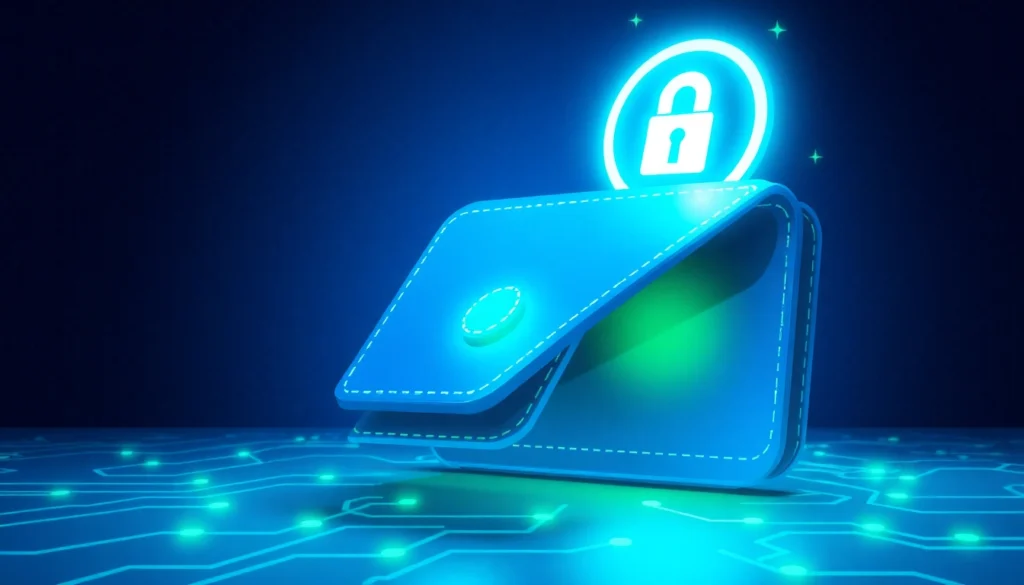Understanding the Role of Crypto Wallets in Modern Digital Finance
In today’s rapidly evolving cryptocurrency landscape, safeguarding digital assets has become paramount. Central to this security is the concept of the crypto wallet. These essential tools enable users to store, manage, and transact their cryptocurrencies securely, offering both convenience and peace of mind amidst an ecosystem rife with opportunities and risks.
What Is a Crypto Wallet and How Does It Work?
A crypto wallet is a specialized digital or physical tool that stores your private keys—secret alphanumeric codes that give you access to your cryptocurrencies on blockchain networks. Unlike traditional wallets that hold physical cash, crypto wallets do not actually store the coins themselves but rather the keys that grant control over those assets. When you initiate a transaction, the wallet signs it with your private key, effectively authorizing the transfer of tokens from your address to another.
This mechanism ensures that only you can access and move your holdings, provided you protect your private keys diligently. Wallets can be software-based applications or hardware devices, each with distinct advantages and security profiles. For example, reputable platforms like Coinbase or MetaMask facilitate user-friendly interfaces to interact with blockchain assets securely.
Types of Crypto Wallets: Hot, Cold, and Hardware
Hot Wallets
Hot wallets are connected to the internet, making them highly accessible for frequent trading and transactions. Examples include mobile wallets like Trust Wallet or web wallets like MetaMask. Their constant connectivity facilitates quick access to funds but leaves them more vulnerable to cyberattacks owing to their online nature.
Cold Wallets
Cold wallets are offline storage solutions, such as paper wallets or air-gapped computers. They provide enhanced security by eliminating exposure to hacking threats. However, their offline status makes regular transactions more cumbersome, often reserved for long-term holdings or large sums.
Hardware Wallets
Hardware wallets, like Ledger Nano S+ or Trezor, are physical devices that securely store private keys offline. They combine high security with ease of use, supporting multiple cryptocurrencies and offering features like secure PIN access and recovery options. Their portability allows users to manage assets safely without connecting to insecure devices.
Key Features to Look for in a Reliable Crypto Wallet
Choosing a trustworthy crypto wallet involves evaluating several critical features:
- Security Protocols: End-to-end encryption, multi-factor authentication, and biometric security are essential.
- User Experience: Intuitive interfaces and seamless navigation enable efficient management.
- Compatibility: Support for multiple cryptocurrencies and integration with DeFi platforms or exchanges enhances flexibility.
- Backup and Recovery: Easy seed phrase backups and restoring capabilities are vital for safeguarding assets against loss.
- Open Source/Open Development: Transparency in code fosters trust and community vetting.
Choosing the Best Crypto Wallet for Your Needs
Security Measures in Leading Wallets
Top-tier wallets employ advanced security measures, including hardware encryption, secure enclaves, and multi-signature approval processes. For instance, Ledger’s Secure Element chip isolates private keys, significantly reducing exposure. Regular security audits and user education about phishing attacks further mitigate risks.
User Experience and Accessibility
Ease of use is crucial, especially for beginners. Wallets like Exodus and MetaMask offer clean interfaces, straightforward setup procedures, and integrated access to dApps. Accessibility features such as biometric login and multi-device syncing are also advantageous.
Compatibility with Popular Cryptocurrencies and Platforms
A versatile wallet supports a broad spectrum of tokens (ERC-20, BEP-20, etc.) and seamlessly connects with exchanges or DeFi platforms. This versatility enables traders and investors to manage varied portfolios within a single interface, streamlining workflow and reducing complexity.
Setting Up and Securing Your Crypto Wallet
Step-by-Step Guide to Wallet Initialization
- Select a reputable wallet provider aligned with your security and usability preferences.
- Download the app or purchase the hardware device from official sources.
- Follow the onboarding process, which typically involves creating a new wallet and generating a seed phrase—a critical backup key.
- Store your seed phrase securely offline, avoiding digital storage that could be vulnerable to hacking.
- Set up additional security layers such as PIN codes, biometric access, or multi-factor authentication.
Best Practices for Protecting Private Keys
This includes never sharing your seed phrase, avoiding storing it digitally or online, and using hardware wallets for large holdings. Consider physical safes or safety deposit boxes for seed phrase storage, and routinely update your security practices to match emerging threats.
Common Security Pitfalls to Avoid
Typical mistakes include phishing scams, exposing seed phrases, using weak passwords, and neglecting software updates. Regularly updating wallet software and verifying official communication channels can prevent many security breaches.
Managing and Using Your Crypto Wallet Effectively
Sending and Receiving Cryptocurrencies Safely
Double-check recipient addresses, especially with QR codes or copy-paste functions, to avoid errors. Use transaction confirmations and set appropriate network fees to balance speed and cost. Maintaining a transaction history log enhances record-keeping and accountability.
Keeping Track of Your Portfolio
Utilize portfolio management tools and integrate with advanced analytics platforms to monitor asset performance. Regular reconciliation with exchange records helps prevent discrepancies and fraud.
Integrating Wallets with DeFi and Web3 Applications
Modern wallets often support direct connection to decentralized exchanges, lending protocols, and NFT marketplaces. This integration simplifies interaction with DeFi ecosystems, encouraging diversification and yield optimization.
Future Trends and Innovations in Crypto Wallets
Emerging Technologies Enhancing Wallet Security
Biometric authentication advances, multi-party computation (MPC), and decentralized identity solutions are setting new standards for security. These innovations aim to mitigate risks associated with private key compromise and enhance user control.
Decentralized Wallet Solutions and Self-Custody
Decentralized wallets eliminate reliance on intermediaries, empowering users with full custody of their assets. Projects like Rainbow or Argent are pioneering self-custody solutions that integrate social recovery, multisig, and embedded DeFi features.
Regulatory Impacts and Privacy Considerations
As regulators scrutinize the crypto space, wallets are evolving to comply with KYC/AML requirements without compromising user privacy. Privacy-centric wallets utilizing zero-knowledge proofs or confidential transactions are gaining traction, balancing compliance with decentralization ideals.
